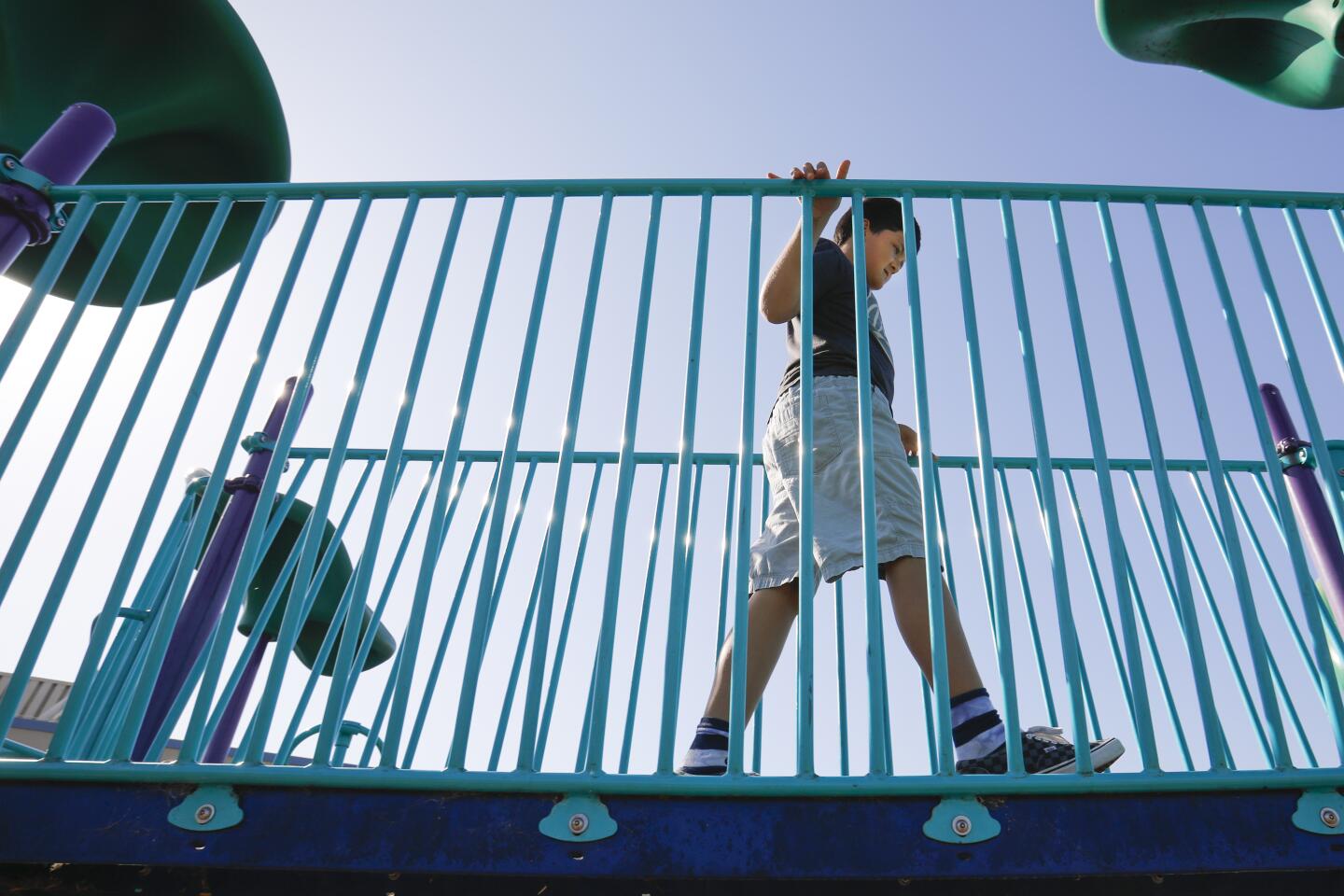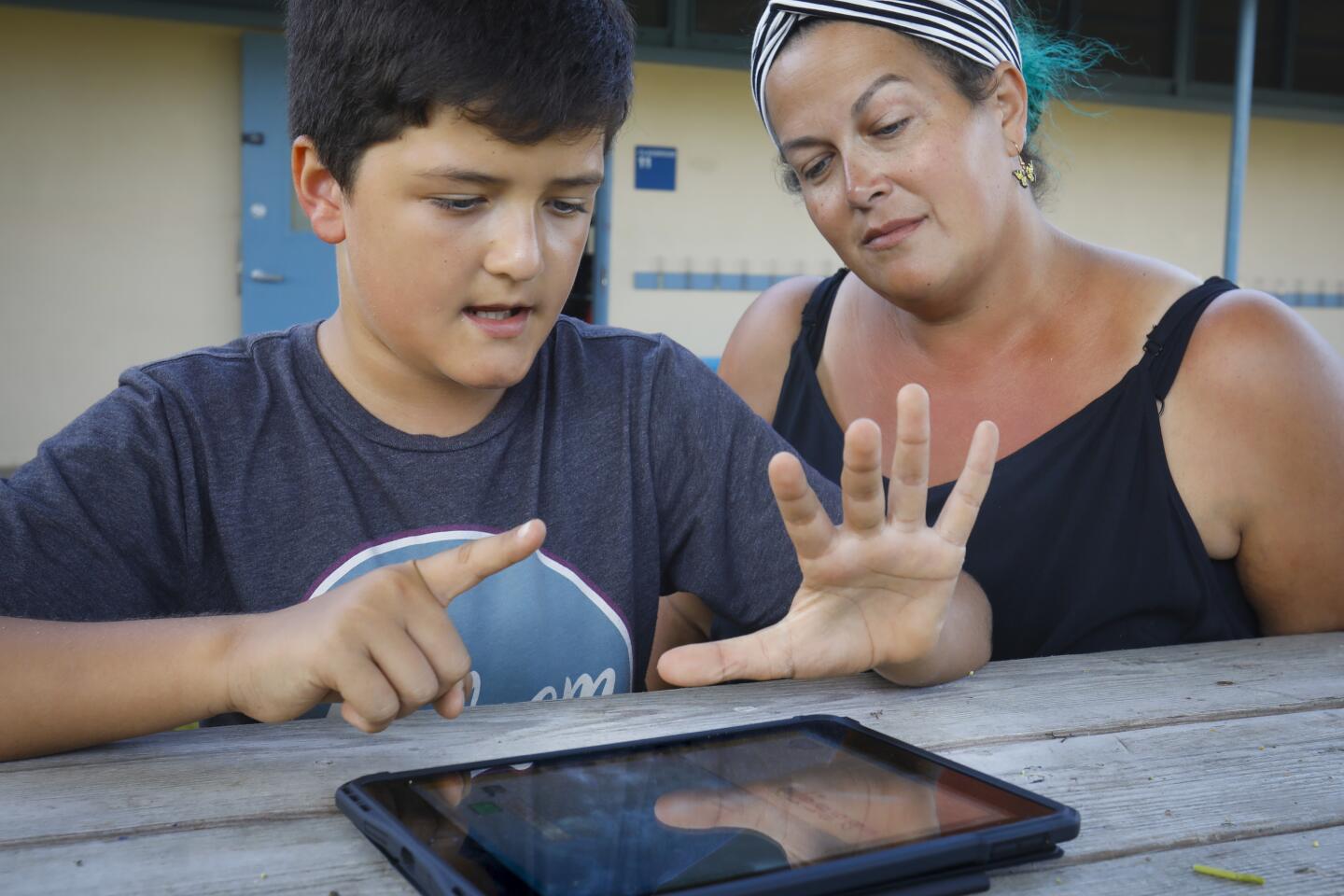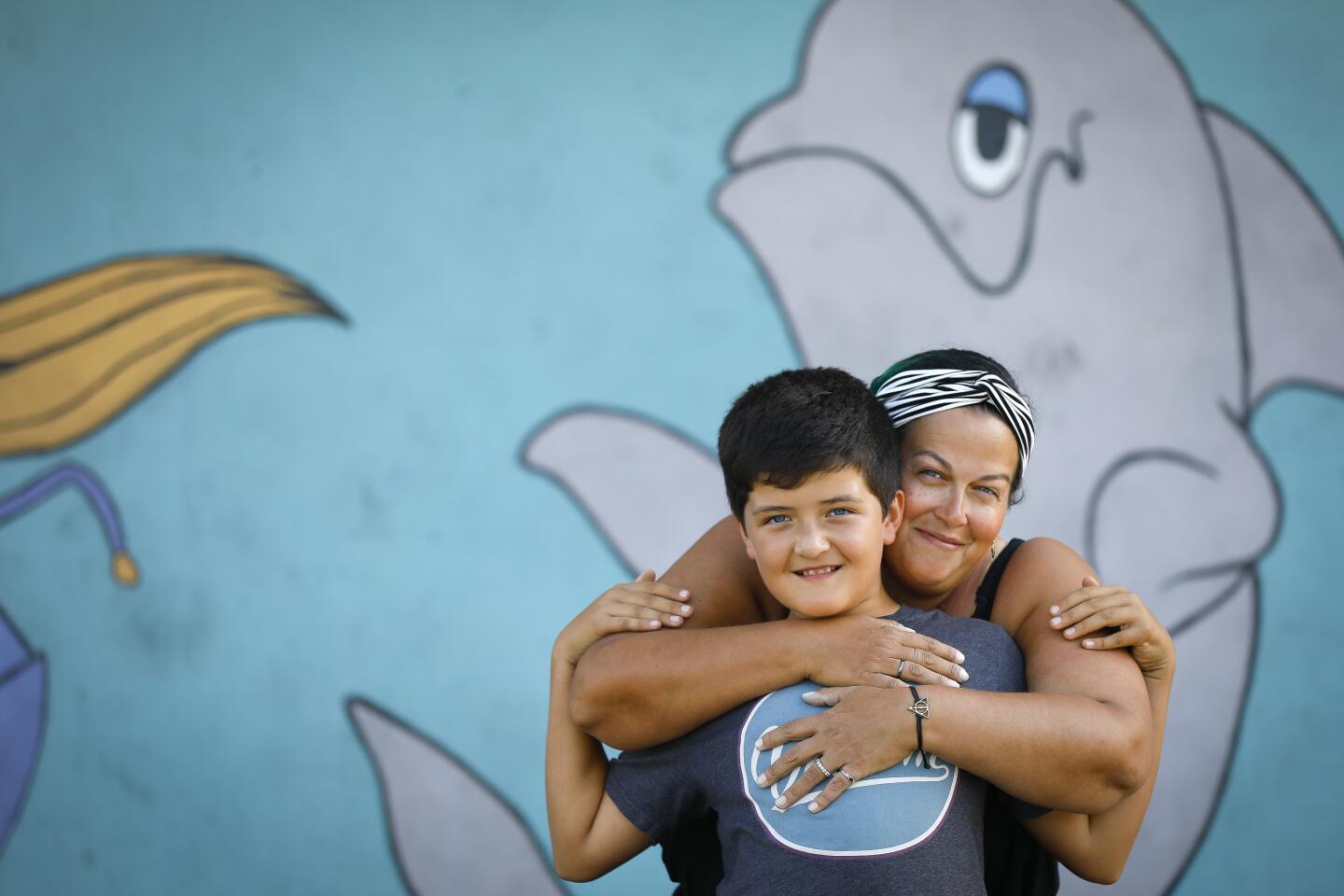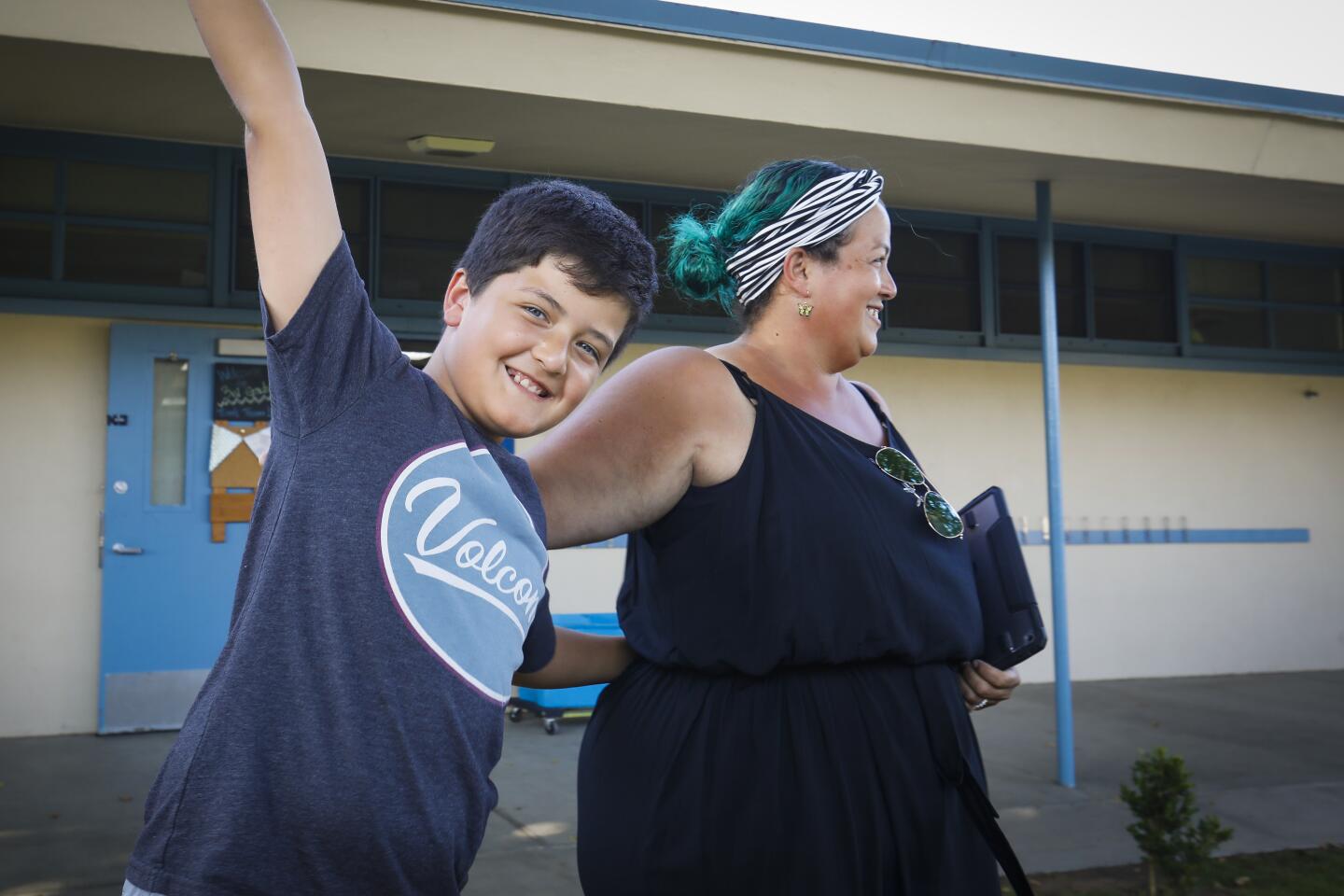
Encinitas fifth grader Nikolai “Niko” Safonov is like many kids his age. He loves the video game “Fortnite,” playing basketball with his friends, and his favorite superhero is Spiderman.
His mother describes him as “a happy happy kid” with a big heart.
But he’s different in a pretty significant way, too. Niko has epilepsy and is prone to seizures, which began two years ago out of the blue. Niko’s parents initially thought he was playing a game, but then his body went limp and he became unresponsive.
“Niko wasn’t breathing right and he wasn’t speaking or moving and he was just kind of flailing,” said his mother Melissa Sarenana-Safonov. “He couldn’t move, he couldn’t speak, but his eyes were just rolling around in his head all over the place..”
Days later he had his second and third seizures back-to-back, leading to a diagnosis of epilepsy at age 8.
It’s been hard, Niko said. Having epilepsy can make him feel isolated from other kids his age, especially when he has a seizure in front of his friends.
“Sometimes if my friends see, (it makes me feel) embarrassed, and maybe like I’m not the same as others,” the 11-year-old said. “I want to be like people who don’t have epilepsy.”
One out of 10 people will experience a seizure at some point in their lives, according to the Centers for Disease Control and Prevention. Doctors may diagnose someone with epilepsy after having two or more unprovoked seizures.
First aid for seizures
If someone is having a seizure, stay with them until the seizure ends, then comfort them and calmly tell them what happened. If the person is having a tonic-clonic seizure — which may include shaking, jerking and yelling — ease the person to a safe place on the floor, turn them on their side and put something soft under their head.
Call 911 if the person has never had one before, if it lasts for more than five minutes, if the person has a second seizure soon after the first or if it happens in the water, the CDC advise. Contrary to what many believe, it is dangerous to place objects in someone’s mouth if they’re having a seizure.
A CDC study in 2015 found that there were nearly 60,000 children in California with epilepsy — and roughly 470,000 throughout the country.
The various disorders that fall under the umbrella of epilepsy have historically been misunderstood, said Jong Rho, chief of neurology at Rady Children’s Hospital.
“It’s actually a complex set of disorders,” Rho said. “It’s more proper to say that there are epilepsies or multiple epilepsies, and so what a person has may be very unique and distinct.”
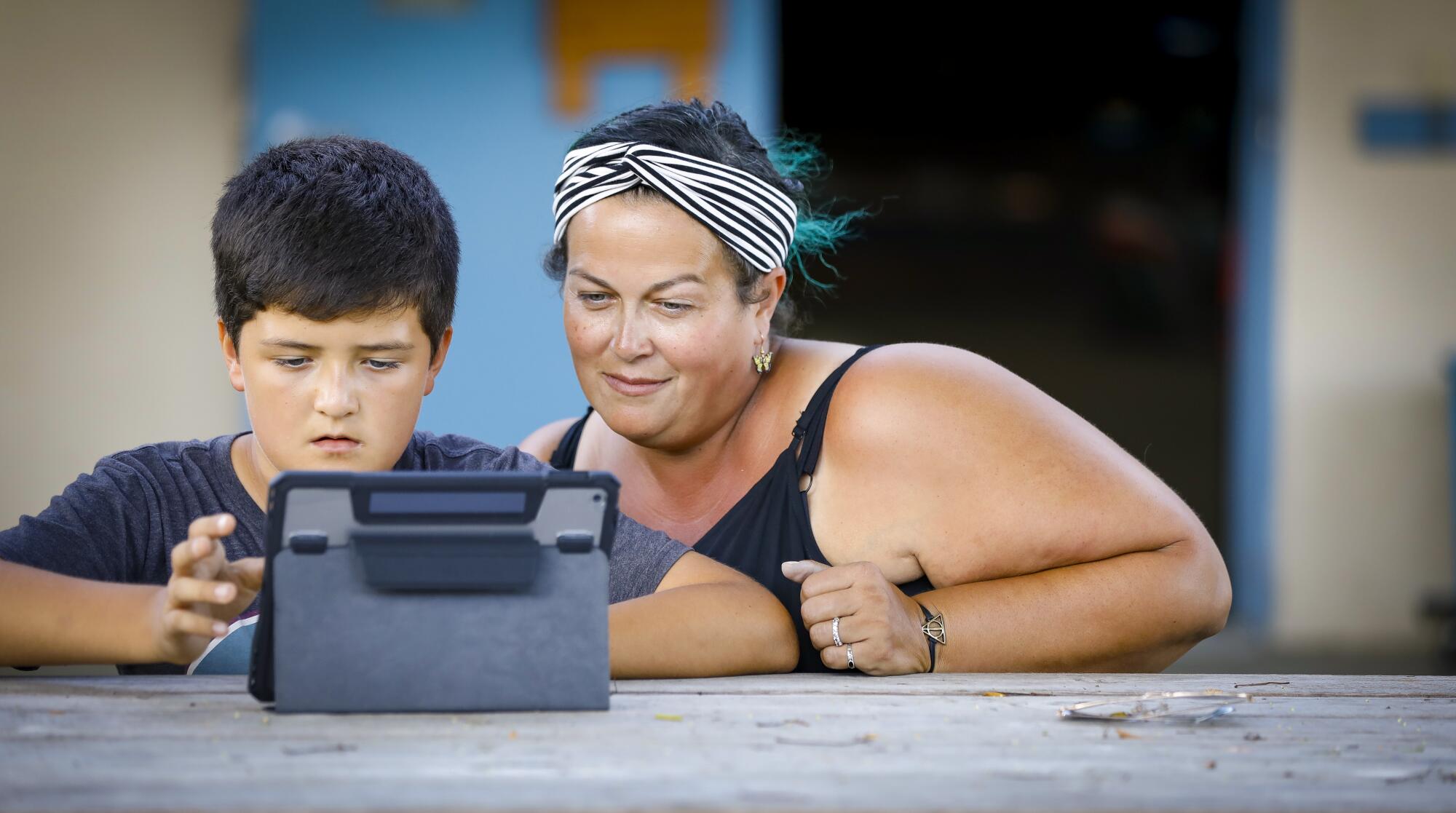
Since seizures can affect different parts of the brain, they can take many different forms. People may shake, fall, experience staring spells or lose awareness of what is happening, according to the CDC. Individuals may even experience different types of seizures each time they have one.
“The first time (Niko) had a seizure, we didn’t know it was a seizure,” his mother said.
In addition to epilepsy, Sarenana-Safonov said her son has also been diagnosed with mild Tourette’s syndrome and obsessive-compulsive disorder. He also has difficulty with coordination, learning and processing the five senses.
The Epilepsy Foundation of San Diego County works to break down some of the social and cultural barriers that people with epilepsy experience. The foundation also trains school nurses on seizure first aid and helps families create individual educational plans with a child’s school.
The nonprofit organizes an annual Gingerbread Kids holiday event and summer camps for children with epilepsy to be able to play with other kids in safe environments. Family members can attend support group meetings and learn about transportation, college scholarships and housing opportunities for those with epilepsy.
“We serve everybody impacted by epilepsy, so not just the individual, but any of the people they love, too,” said Shannon Wills, program and client services manager.
Niko has not been to camp yet. His mother said he gets nervous around new people, but she hopes to bring him to one eventually.
Sarenana-Safonov and her husband Vitali Safonov spend most of their time either at work or caring for their son, so “date nights” for the couple have evolved into watching a movie while Niko naps. They’ll often take turns watching him so they can have some alone time, often going for long walks.
Their oldest son Devin, 24, is a sergeant in the U.S. Army stationed at Fort Carson in Colorado.
Looming in the back of the couple’s mind is the threat of something called Sudden Unexpected Death in Epilepsy, or SUDEP. It may result from more than one cause, or a combination involving both breathing difficulty and abnormal heart rhythm. There is an increased risk of SUDEP during or following a seizure, so prevention is key, the CDC reports.
For Niko, that means a carefully planned schedule, a full night of sleep every night, a healthy diet and reduced time in the sun to prevent him from getting overheated. He also takes medication twice a day.
Resources
Epilepsy Foundation of San Diego County
Phone: 619-296-0161
Website: https://epilepsysandiego.org
San Diego Regional Center
Phone: 858-496-4318
Website: http://www.sdrc.org
CDC Guide to Seizure First Aid
Website: https://www.cdc.gov/epilepsy/about/first-aid.htm
Medicines used to treat epilepsy will successfully control seizures for about seven out of 10 people with epilepsy. They don’t fix the problem that causes seizures. Instead they work to stop seizures from occurring, the Epilepsy Foundation says.
Marijuana-derived medications are increasingly being used to treat epilepsy, but they’re not a solution for everyone. Treating children can be tricky. Kids can only be treated with CBD medications like Epidiolex for severe cases of epilepsy, according to the National Institute on Drug Abuse.
Niko’s mother looks down the road and worries about how her son’s epilepsy will play into his future, like whether he’ll ever be able to drive a car and what might happen if he goes away to college.
“All children’s lives depend on their parents, but (with Niko) it’s literally minute by minute,” she said. “Your child is depending on you for their medicine, for things that if you don’t give that to them, they could potentially die.”
Get CaregiverSD in your inbox on Mondays
Helpful tips, information and resources from caregiverSD.com in your inbox Monday mornings.
You may occasionally receive promotional content from the San Diego Union-Tribune.

